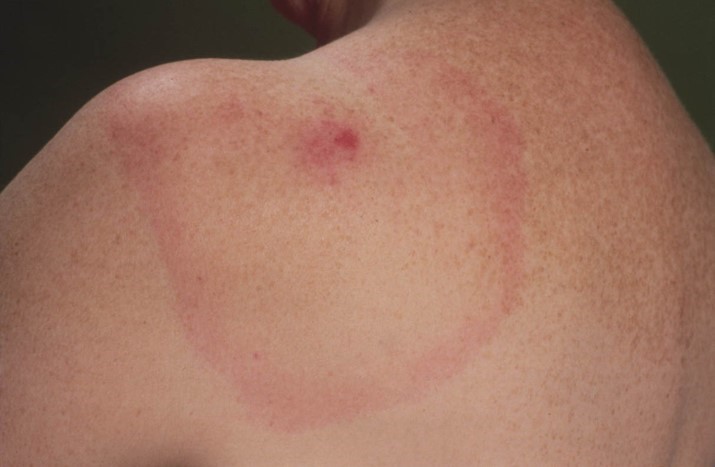Outstanding paper published by researchers at Faculty of Medicine
Daša Stupica, MD, PhD; Vera Maraspin, MD, PhD; Petra Bogovič, MD; et al.
JAMA Dermatol. 2018;154(9):1050-1056. doi:10.1001/jamadermatol.2018.2306
The authors of the paper are researchers affiliated with the Faculty of Medicine, University of Ljubljana and University Medical Centre Ljubljana.
Their study was published in the September issue of Jama Dermatology, 2018 and has also been recognized by the University of Ljubljana as one of the most outstanding research achievements in 2018.
https://jamanetwork.com/journals/jamadermatology/fullarticle/2688585
Their research focused on the following question: in what way does clinical course and treatment outcome for patients with early disseminated Lyme borreliosis differ from those with early localized Lyme borreliosis?
Multiple erythema migrans (MEM) has been suggested as a risk factor for unfavorable antibiotic treatment outcome compared with solitary erythema migrans (EM). However, no direct comparison of early Lyme borreliosis manifested as MEM with solitary EM has been undertaken.
The aim of the present study was to further investigate the potential differences in clinical course and treatment outcome between patients with MEM and patients with solitary EM.
The study was approved by the Medical Ethics Committee of the Ministry of Health of the Republic of Slovenia. Written informed consent was obtained from all study participants.
This prospective cohort study was conducted from June 1, 2010, to October 31, 2015, at the University Medical Center Ljubljana, Slovenia. Data were analyzed from June 1, 2017, to January 3, 2018. Of the 778 consecutive adult patients with early Lyme borreliosis evaluated, 200 patients with MEM and 403 patients with solitary EM were enrolled. Patients were asked to refer a family member or a friend of similar age (±5 years) without a history of Lyme borreliosis to serve as a control participant. Clinicalcourse and posttreatment outcome of MEM were compared with those of solitary EM. Outcome was assessed at 14 days and at 2, 6, and 12 months after enrollment. At each visit, patients completed a written questionnaire about their symptoms; controls completed the same questionnaire. Nonspecific symptoms reported by patients and controls without a history of Lyme borreliosis were compared.
It was conducted that the proportion of patients with incomplete response at 12 months after enrollment and the associated 2-sided 95% CI for the difference between MEM and solitary EM were estimated using the normal approximation with continuity correction.
As for the results, a total of 200 patients with MEM and 403 patients with solitary EM were included. Among the 200 patients with MEM, 94 (47.0%) were males and 106 (53.0%) were females, with a median (interquartile range [IQR]) age of 47 (35-58) years. Among the 403 patients with solitary EM, 182 (45.2%) were males and 221 (54.8%) were females, with a median (IQR) age of 55 (42-62) years. Patients with MEM reported Lyme borreliosis-associated constitutional symptoms at enrollment more often than those with solitary EM (93 [46.5%]; 95% CI, 39.4-53.7 vs 96 [23.8%]; 95% CI, 19.7-28.3; P < .001). During the initial 6 months after treatment, the proportion of patients with incomplete response was higher in the MEM group than in the solitary EM group (14 days: 62 of 193 [32.1%] vs 72 of 391 [18.4%]; P < .001; 2 months: 38 of 193 [19.7%] vs 55 of 394 [14.0%]; P = .28; 6 months: 29 of 182 [15.9%] vs 31 of 359 [8.6%]; P = .02). However, at the 12-month visit, the outcome was comparable: 10 of 170 (5.9%) patients with MEM vs 20 of 308 (6.5%) patients with solitary EM showed incomplete response (-0.6; 95% CI, -5.5 to 4.3; P = .95). The frequency of nonspecific symptoms in patients was similar to that in controls.
The researchers came to a conclusion that the long-term outcome at 12 months after treatment was comparable, regardless of dissemination. Follow-up of at least 12 months after treatment is thus recommended for future studies that investigate post-Lyme borreliosis symptoms.

Photograph:erythema migrans on the shoulder /UKC Ljubljana




